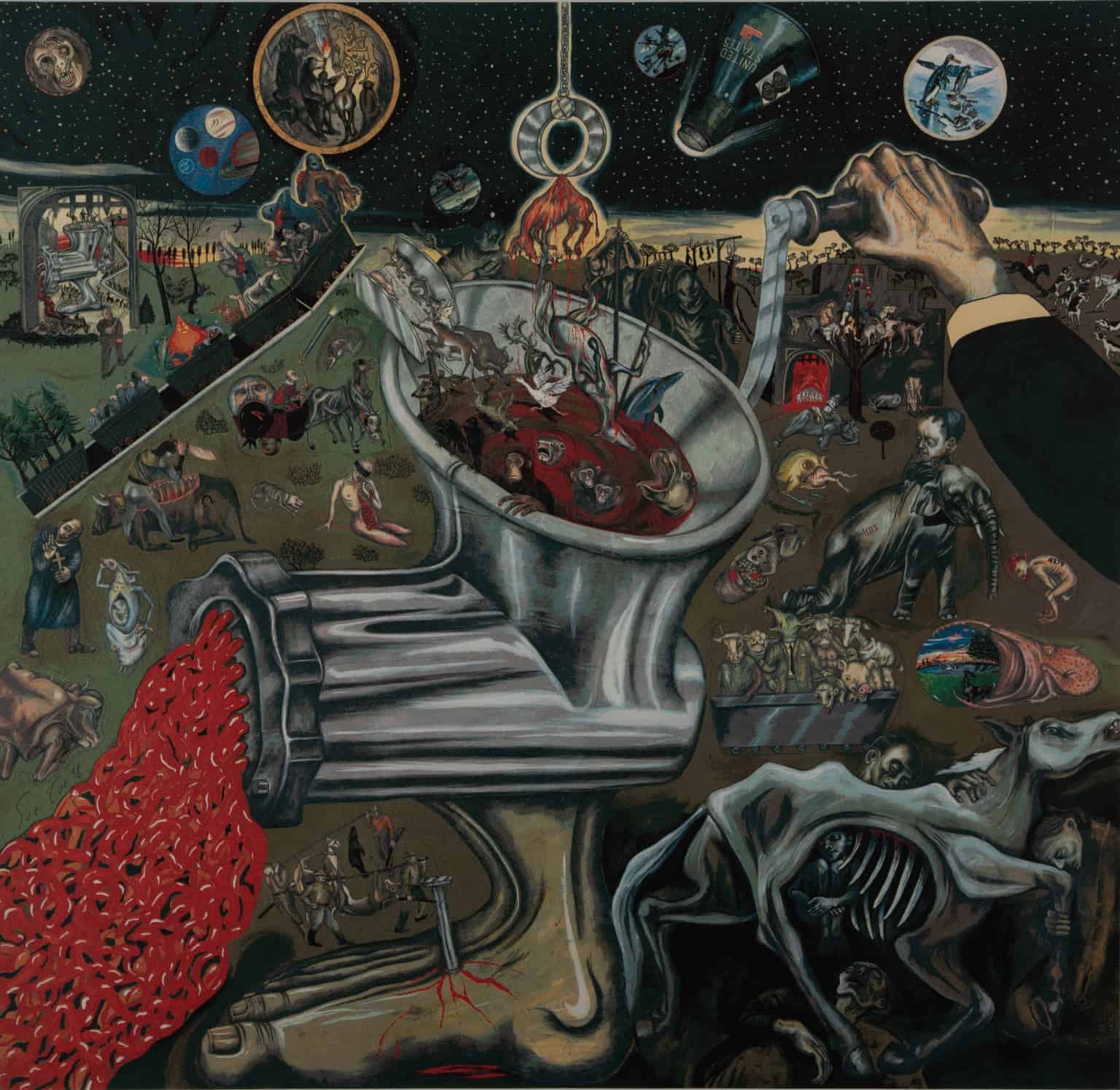
Second Millenium
- Sue Coe (British-American, Born 1951)
Sue Coe is an English artist working primarily in printmaking, drawing, and illustration. Coe began doing work for newspapers at the age of sixteen, and since then her life has been dedicated to editorial art and narrative. Her work is highly political and often serves as an intentionally uncomfortable commentary on issues such animal rights, the rights of marginalized people, and capitalism. Her work has been exhibited and collected internationally, and her illustrations are often published in magazines, newspapers, and books.
Sue Coe grew up in Straffordshire, England behind a hog farm and slaughterhouse, which caused her to develop a strong passion for fighting against animal cruelty. She recalls being continuously exposed to the animals’ screams and the strong stench coming from the slaughterhouse. Coe translates these memories and traumatic experiences into visual form for works such as Second Millenium. The viewer is assaulted by a nonsensical scene full of gore – a large meat grinder springs from a severed human foot serving as the focal point, while the surrounding environs include a host of dead and dying animals, human and animal carcasses, and man-made creations delivering various animals to their deaths. The complexities of the piece are reminiscent of Hieronymus Bosch’s (1450-1516) Garden of Earthly Delights– a dramatic, fantastical, and grotesque view on the religious transitionary narrative of Eden to the Last Judgment. In both the historical Netherlandish painting and the modern Sue Coe print, there is no emphasis on realistic perspective or a sense of space. Figures are overlapped, the sense of scale is exaggerated, and the color palette is unnerving at best. These artistic choices intentionally create a chaotic, disturbing, and thought-provoking atmosphere for viewers in both cases.
Sue Coe has dedicated her life and her art to fighting for the rights of the marginalized, and does not shy away from making her viewers uncomfortable. Second Millennium is an example of Coe’s desire to represent those victims, human or animal, oppressed by things beyond their control. Her works are often auctioned off at fundraisers for progressive causes. When it comes to feminism, Sue Coe has expressed her criticism of the movement as being controlled by America’s dominant classes. And when asked, “How does it feel to be a woman artist”, Sue Coe is known to respond: “I mean, how does it feel to not be?”
